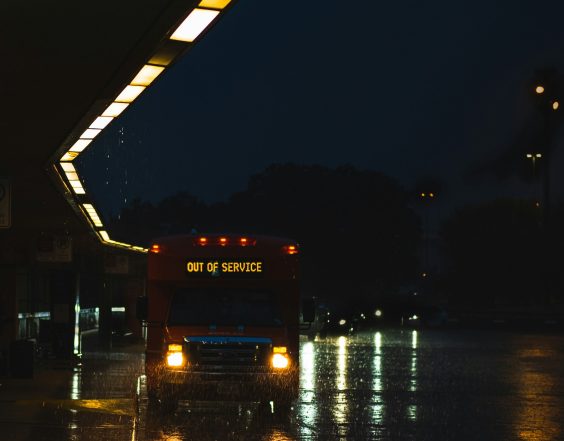
The California Strategic Growth Council (SGC) agreed yesterday to award funding to eight projects that had been left out of the Affordable Housing and Sustainable Communities awards earlier this year.
The projects had all applied for funding under the AHSC program, and had all received high scores, but limited funding and a requirement that no one area of the state receive more than $15 million left these project out of the running last June when the awards were announced.
Around the same time, new allocations were made to the AHSC from the state's cap-and-trade program. Because cap-and-trade has successfully raised more money each year, there was more money available for the 2015-2016 round of funding. SGC staff recommended using some of that money to fund ten projects that already gone through the application process.
Senator Kevin De León, President ProTem of the California Senate, applauded the awards. “Today’s action is another example of how California is concretely moving forward with equitable housing and urban planning efforts that reduce overall traffic and air pollution,” he said in a press release. “Over a third of the air pollution produced in our state comes from transportation sources: cars, trucks, and traffic. These funds will be invested to clean up the air our children breathe, and to provide desperately needed affordable housing in the city center.”
Three of the projects had received partial funding in the first go-round, and four of them had not been awarded funds because jurisdictional caps limited each area of the state to no more than $15 million.
The current awards had to comply with existing guidelines for the AHSC program, which meant that the SGC had to award a minimum of 30 percent to “Integrated Connectivity Projects”—those that enhance transit, walkability, and bikeability—and a minimum of 40 percent to transit-oriented developments. Also, at least half had to go for affordable housing, and half had to be spent in disadvantaged communities. Note that these uses can overlap, so these percentages don't necessarily add up to 100.
Staff recommended eight projects for funding, for a total of $32.4 million. The winning projects are
- Rolland Curtis East in Los Angeles: $4 million
- MacArthur Park Apartments Phase B in Los Angeles: $2 million
- 1st and Soto Apartments in Los Angeles: $4.1 million
- Eddy and Taylor Family Housing in San Francisco: $2.29 million
- 222 Beale in San Francisco: $6.5 million
- Jordan Downs Phase 1 in Los Angeles: $6.5 million
- Riviera Family Apartments in Walnut Creek: $678,000
- San Leandro Senior in San Leandro: $7.9 million
Details on each of the projects can be found here [PDF].
Members of the council asked questions about the ongoing clean up of lead contamination in the vicinity of the Jordan Downs project. They also asked what was being done to ensure that current residents will not be displaced. The project's coordinator told them that each of the currently existing units, of which there are seventy, would be replaced with one at an equal rent, and that current tenants would have the right to rent those. A total of 700 units will be built at the site.
The jurisdictional cap meant that one of the projects in the Boyle Heights neighborhood of Los Angeles—1st and Soto Apartments—will receive only partial funding. And only one project that met other criteria was also considered an Integrated Connectivity Project, so that one—Jordan Downs in Watts (South L.A.)—was recommended for full funding, even though it scored lower than other projects in L.A.
New Guidelines
At the same meeting, the council also adopted new guidelines for future funding cycles for the AHSC, which were drafted after a series of public meetings held over the course of the fall.
The new guidelines (summary here: [PDF]; guidelines here: [PDF]) divide up the three categories of projects—transit-oriented development, “integrated connectivity” projects, and “rural innovation project areas”—so that similar projects compete against similar projects. Each category will be awarded a minimum percentage of the total funds available (35 percent for the first two, and ten percent for rural projects).
The guidelines also add incentives for transportation and housing organizations to work together, even informally. One benefit of this change is it will allow transportation projects to apply on their own, even if they are not directly connected to new housing.
The guidelines also suggest using WalkScore and BikeScore to measure connectivity, but recognize the limitations of these methods and provide other ways to measure this important criteria.
They also beef up anti-displacement criteria. Avoiding displacement of residents is already a requirement under housing law, so that was made a threshold criteria, and the guidelines add scores for economic displacement and job training.
AHSC staff have already said that their goal is to ultimately remove parking entirely as an eligible expense under the program, but the new guidelines don't go that far; right now they add points for reducing parking as much as allowed under local zoning requirements.
The new guidelines also reduce the minimum award from $1 million to $500,000.
The 2015-2016 funding cycle will have $320 million available for awards (minus the approximately $32 million awarded today). Concept applications for the next round will be due in March of 2016; those projects most likely to be eligible will be invited to complete the full application in April. This step was created to reduce the workload of staff that must score the application as well as organizations applying for funds, as the process can be arduous.
The full applications will be due in June, with awards announced next August.





